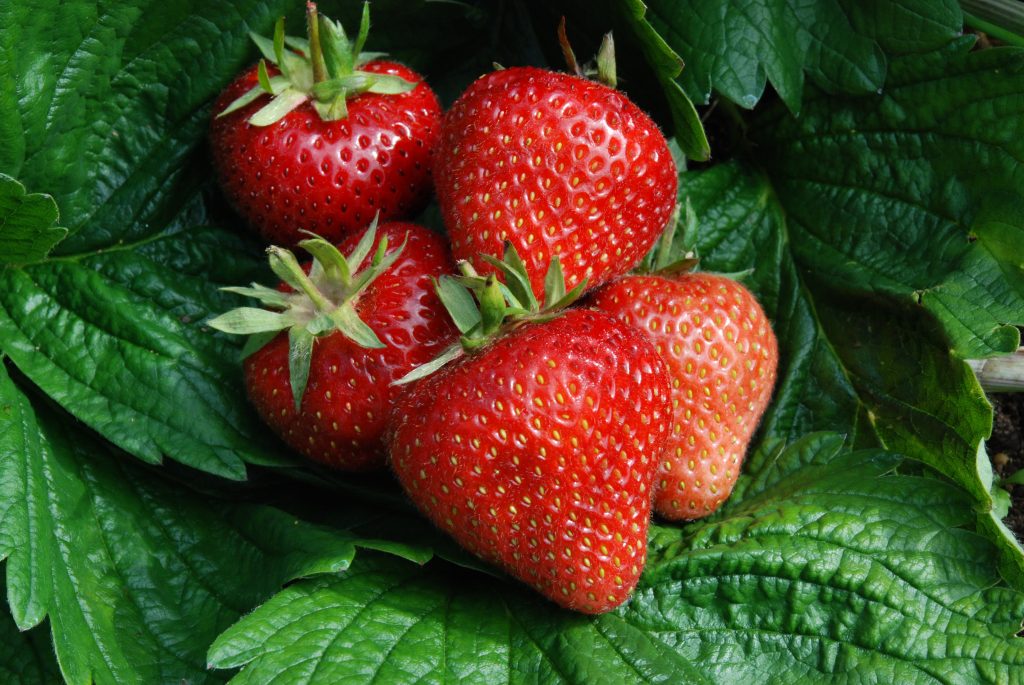
Yes, it’s that time of year again. No. I don’t mean Wimbledon, but strawberry season – though the two are inextricably linked.
If I was forced to pick a favourite fruit it would be easy for me to choose strawberries and fortunately it is easy to grow a few at home, whether in beds, pots or hanging baskets. It is not possible to grow all the strawberries I want to eat all summer but I can grow some as a treat. Even planting a few in a pot on the patio will provide some fruit to add to breakfast or desserts.
Strawberry plants grow and crop quickly. You can even buy plants in bloom that will crop in a few weeks. The plants will last for up to two years in a pot or maybe three years in the ground but then need to be replaced. This is easy to do because, after fruiting, strawberry plants (except most alpine strawberries) will produce plantlets on ‘runners’. In most cases these need to be removed because they will otherwise root among the bigger plants and crowed them out, reducing yields. But when you want to make new plants it is easy to peg them into small pots of compost and root them. Keep the pots moist so the plants root well and when they are obviously growing well you can cut them off the parent and plant them in new beds or pots.
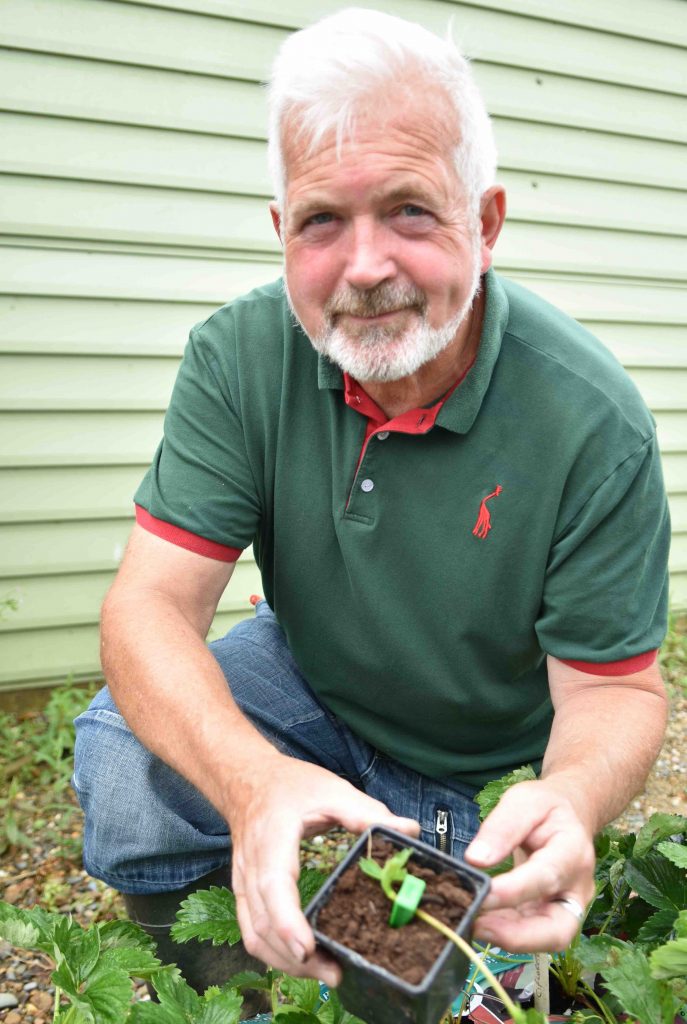
You can buy plants now and plant them and get a light crop within weeks but they will be much bigger plants, with bigger crops, next year. You can put them in pots, in hanging baskets or in a sunny spot in the garden. Strawberries prefer a spot in full sun and light soil – they can struggle in clay soils, especially if they are wet in winter. In pots use John Innes No 3 compost or a mix of that and multipurpose, about half of each. When planting, do not plant them too deep – no deeper than they are in the small pots. Deep planting can lead to rotting.
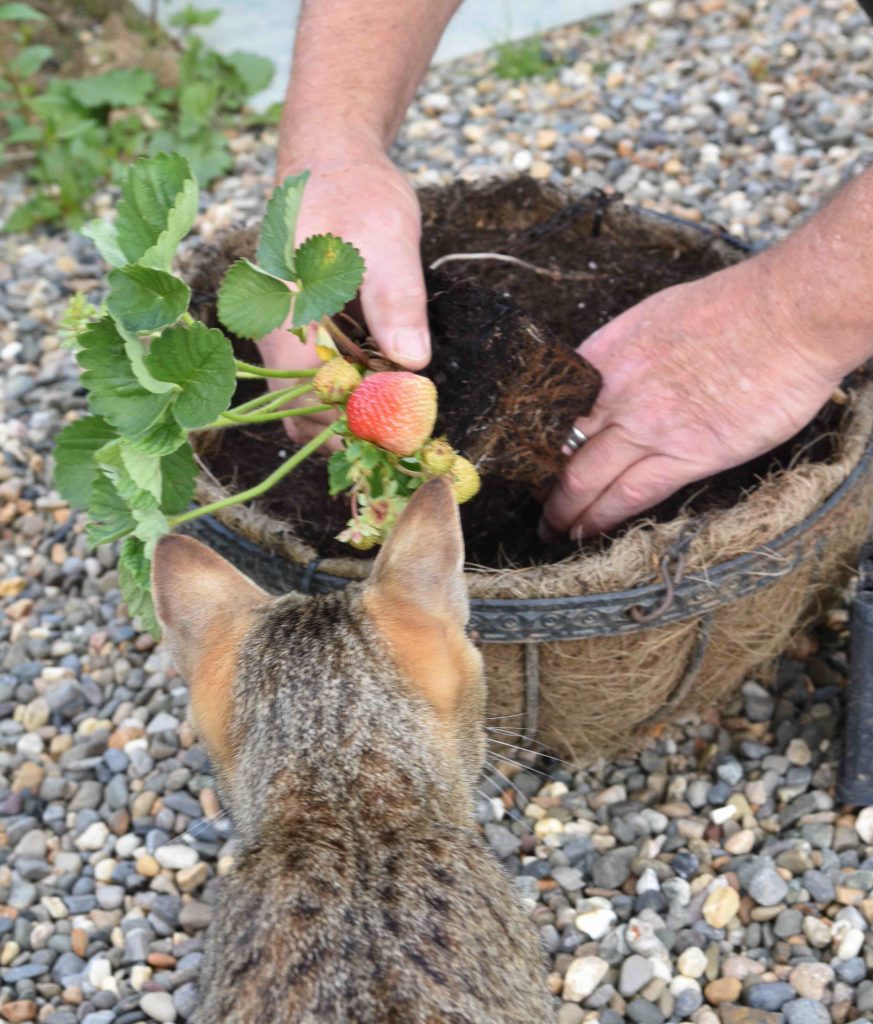
The advantage of growing in baskets and pots is that the fruits are lifted off the ground and will be less likely to be attacked by slugs and snails. But birds may still be an issue! Remember that your plants in pots and baskets will need constant watering and feeding. A tomato fertiliser is fine for this.
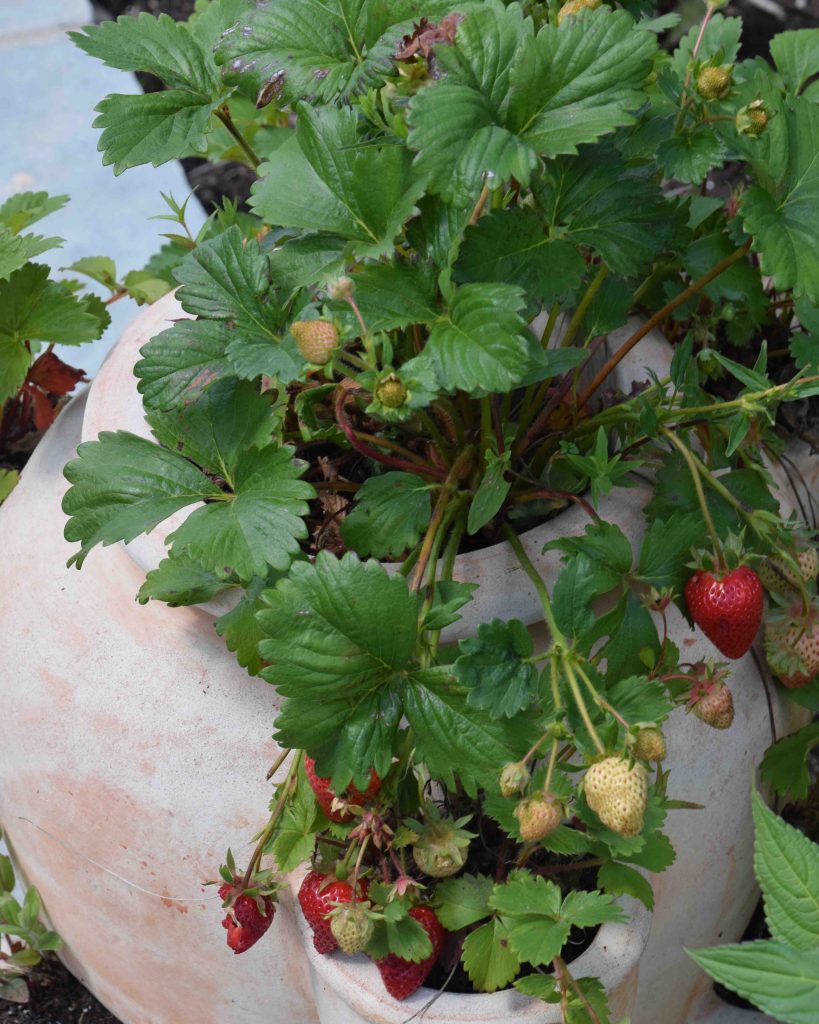
Strawberry pots are popular but they do have problems. It can be difficult to keep the compost at the top moist without the lower levels being saturated and, if they are terracotta, they can dry out very quickly. But they certainly look lovely, especially when covered in fruits. A budget option is to grow them in bags of compost or in growing bags. This is how most commercial strawberries are grown. You can get four to six plants in a ‘small’ bag of compost – about 30-40 litres. Cut holes in the top, make some drainage slits in the base and insert a cut, plastic bottle in a central hole in the top to aid watering. I grow some this way and keep them in the polytunnel over winter for some early berries. Planted now they will give a good crop next April-May and then I will start again.
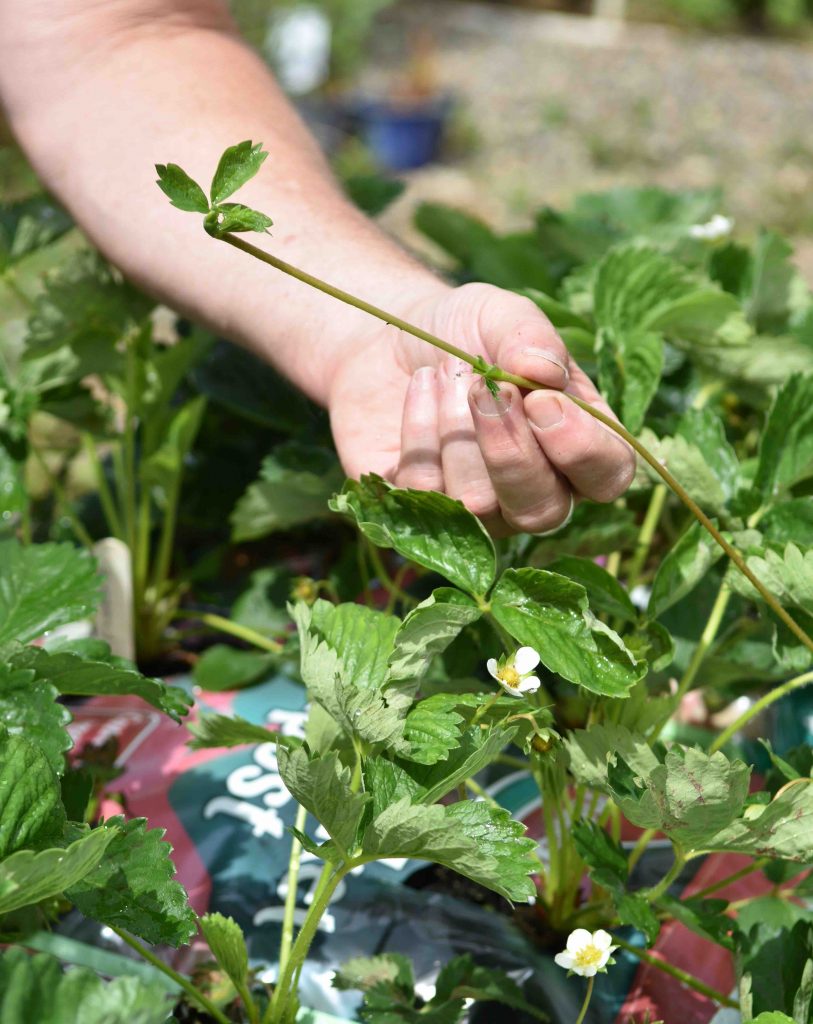
When it comes to varieties, it is hard to beat ‘Elsanta’. This is a summer strawberry but you can also get remontant or ‘everbearing’ strawberries that crop lightly over a longer period – perfect if you just want one or two a day to add to your muesli. I find these kinds are a bit firmer and not quite what I want from a strawberry but they are useful. I confess I do tend to grow less usual kinds, that are not what commercial growers favour, because the yields are lighter and the fruits are too soft to ship, but that have better flavour – though of course anything grown at home tastes better! ‘Royal Sovereign’ is hard to beat for flavour although my favourites are the French ‘Gariguette’ and ‘Ciflorette’.
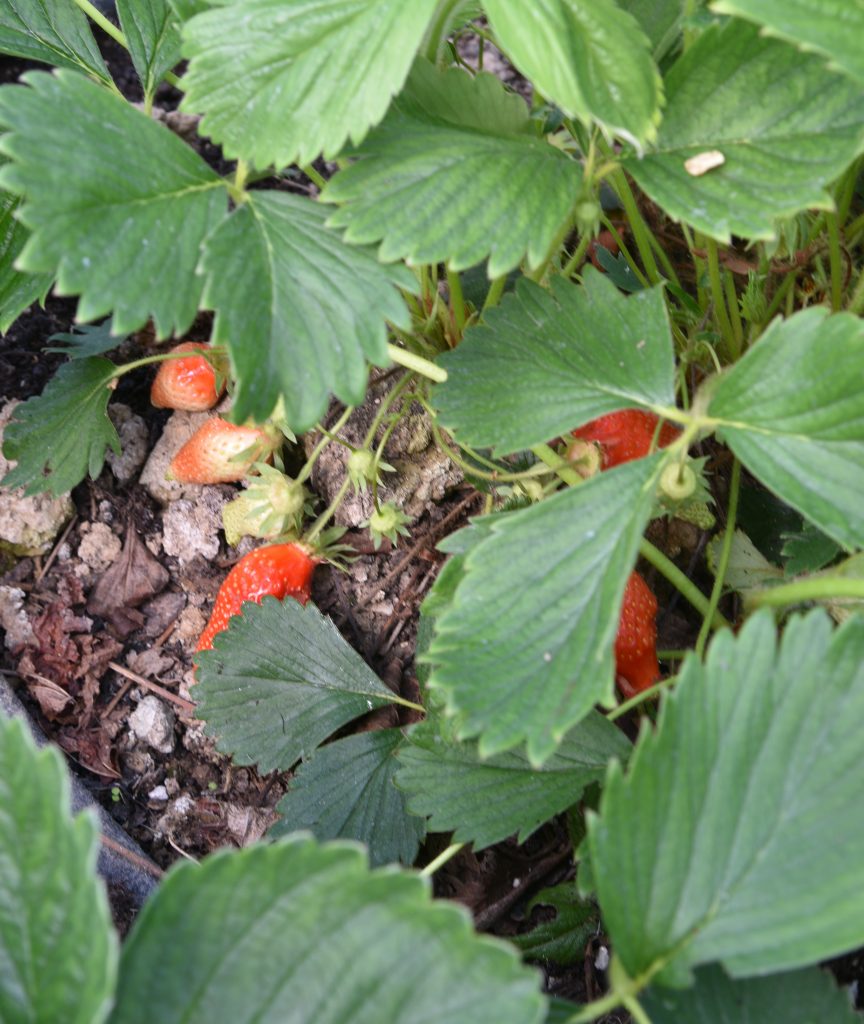
A few strawberry plants are a great thing for children to grow. They crop within a few weeks and the flowers attract pollinators.
Alpine strawberries are especially delicious and they crop for several months. They will grow in part shade and make good ground cover too or can be grown in pots. The fruits are tiny and crops are light but they make up for that with their flavour.
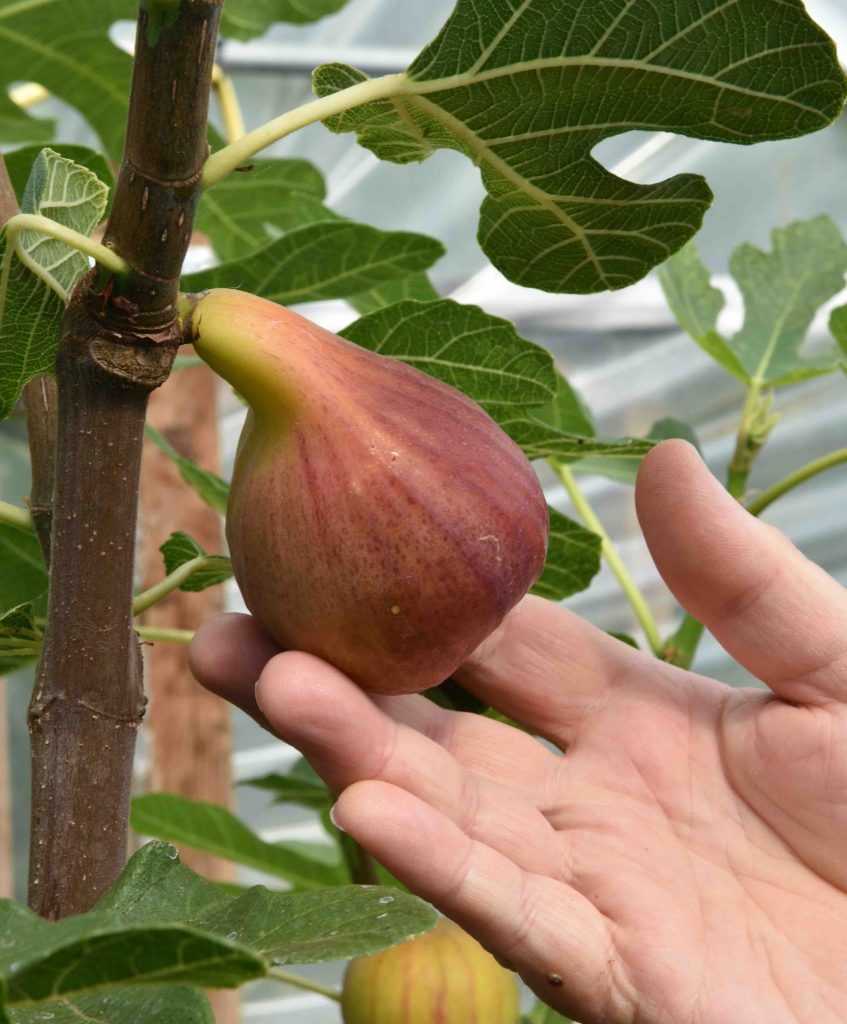
Figs are a longer-term investment and my fig tree has, at last produced a crop of ripe fruits, after three years. Figs can be grown outdoors in the soil, against a wall, in pots or under cover in the greenhouse or polytunnel. Next week I will explain how to grow this rather exotic fruit.
Weekly reminders
Keep your tomatoes under control. Remove side shoots on the stems as soon as you see them. Keep plants watered and fed.
Don’t let weeds seed! We always miss some large weeds when we are weeding so take a step back or you will miss that huge sow thistle that is masquerading as a plant! Try not to let any weeds get to the stage when they are seeding or your problem will be worse next year.
Prune blackcurrants. Blackcurrants produce fruits on the stems that grew last year. So prune out all the shoots that carried currants this year. Leave all this year’s new shoots – they will crop next summer.
Deadhead roses. As flowers fade, cut back the stems to remove the flowers and encourage new blooms. Prune back to the uppermost, fully grown leaf on the stem. If blackspot is affecting the plants make sure you spray with a fungicide to prevent further infection and prevent the rose bushes being weakened by the disease.